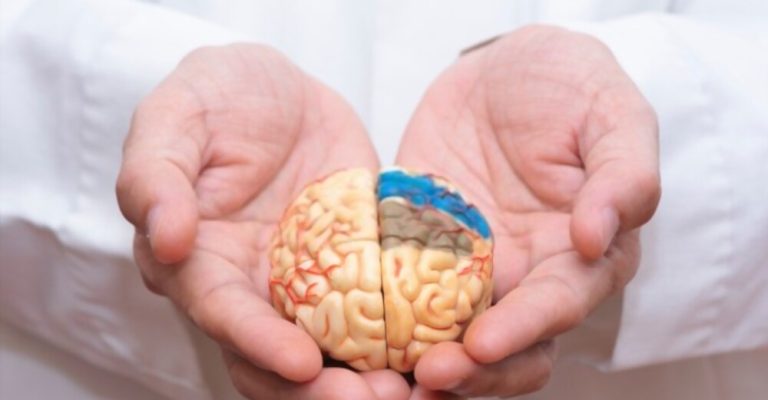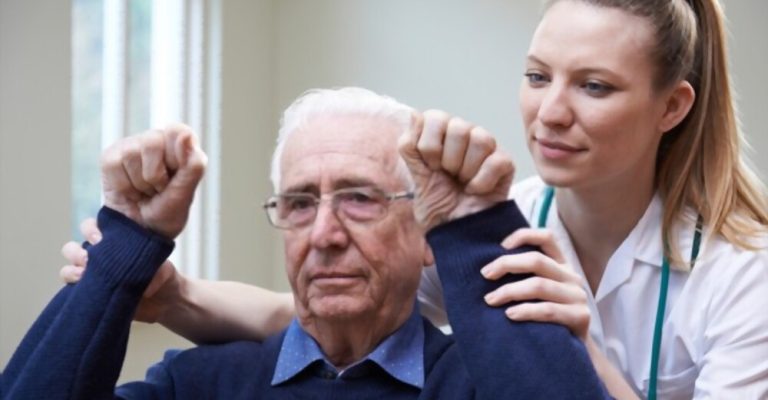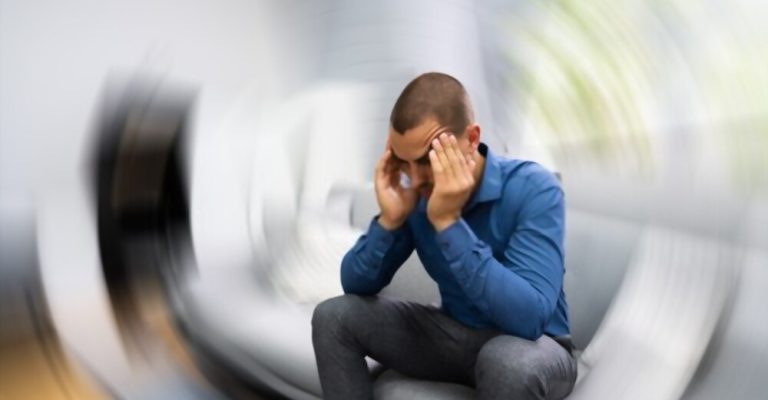
Although a left-sided stroke might drastically impact one’s life, it is possible to make the most of the healing process by familiarizing oneself with the potential after-effects. While the after-effects of a stroke on the left side of the brain are not the same for everyone, they are known to be more common.
The causes of strokes and the particular consequences of left-sided strokes will be discussed here. To aid in your recovery from a left-side brain stroke, we’ll also go through rehabilitation techniques that have been successful in the past.
Strokes occur when an arterial blockage (ischemic stroke) or an arterial rupture (hemorrhagic stroke) prevents blood from flowing normally to the brain. A stroke is a medical emergency because brain cells die when they don’t get enough oxygen-rich blood. Factors in stroke development include hypertension, cholesterol levels, body mass index, and tobacco use.
The first step in treating a stroke is getting the patient to a hospital, where CT or MRI scanning will be used to pinpoint the exact location of the damage and the specific kind of stroke that has occurred. Clot-busting medications like tPA may be used to treat ischemic strokes in rare cases. On some occasions, such as when a hemorrhagic stroke has occurred, surgery is required.
Restoring function and addressing the subsequent consequences of a stroke need prompt intervention once the underlying cause has been identified and treated. Remember that time is of the essence when it comes to treating stroke symptoms.
A prompt approach may lessen the extent of brain tissue damage, reducing the chance of subsequent severe consequences and perhaps saving the patient’s life. Facial drooping, numbness or paralysis on either side of the body, difficulty speaking clearly, and even a headache may be the first signs of a stroke. Check for early stroke symptoms to safeguard yourself better or someone you care about.

Each half of your brain, or hemisphere, has a name: the left and right hemispheres. The brain’s hemispheres are divided into two distinct regions, each controlling different bodily processes. The brain’s right hemisphere manages one’s right side of the body, whereas the left hemisphere manages one’s left side.
The frontal lobe, motor cortex, visual cortex, and somatosensory cortex are all bi-lobed, meaning that each brain hemisphere is responsible for half of their functions. However, different sensory, psychological, and intellectual processes are located in each hemisphere.
Therefore, a left-sided stroke may cause a variety of impairments. These deficiencies, however, tend to fall into one of many categories. These are the consequences of stroke in the left hemisphere, in addition to the more common ones:
Left brain regions, known as Broca’s and Wernicke’s areas, are responsible for language. This is why aphasia is so common among stroke patients who suffer damage to their left side. Individuals with aphasia may have trouble understanding and using language in their daily lives. This may have a devastating impact on a survivor’s communication skills and is very irritating.
Getting an appropriate diagnosis and treatment strategy for aphasia requires the help of a trained professional known as a speech-language pathologist. However, not all difficulties with communicating are aphasia.
Similar to cognitive processes, vision involves several brain regions. Stroke survivors may have ongoing vision issues from injury to the visual cortex, regardless of which brain hemisphere was affected.
On the other hand, visual abnormalities caused by a left-sided stroke will show up in the right eye. Homonymous hemianopia, for instance, causes a person to be blind in the right half of their visual field with both eyes.
Homonymous hemianopia and other visual impairments may make a person more vulnerable to harm after a stroke on the left side of the brain. If left untreated, vision abnormalities might also bring on side effects, including vertigo.
The preceding disabilities are the most prevalent among left-side stroke survivors. However, there are many more possible consequences. Fortunately, a thorough rehab regimen may help with most of these negative consequences. Nevertheless, the road to recovery after a stroke requires commitment and perseverance.
When a stroke affects one side of the brain, the affected side of the body often experiences motor deficits, including muscular weakness. This impairment, known as hemiparesis, will manifest on the right side of one’s body after a left-sided stroke.
Many of the difficulties people have using their left sides are due to hemiparesis caused by a stroke. For instance, muscle weakness and lack of coordination on the right side of the body make it harder to do numerous routine actions. Since many survivors may not be able to rebuild power on their right sides without the help of adaptive devices or compensating procedures, this is a significant problem.
When the muscles used for speaking are not properly coordinated, a problem known as apraxia of speech may develop. When the nervous system and muscle groups don’t communicate properly, people with apraxia of speech have trouble functioning the mouth’s muscles. This makes it challenging to articulate speech.
The person’s brain may be able to process the things they wish to speak, but they cannot articulate those thoughts verbally. So, it’s not a cognitive issue but rather a muscular one. The condition is distinct from dysarthria, resulting from the weakening of the speaking muscles.
The two sides of the brain work together to perform tasks like remembering and thinking. This implies that cognitive deficits like memory loss and difficulty conceiving new problems might occur in the left or right hemisphere after a stroke. But it’s important to remember that left-sided strokes are more likely to cause issues with working memory for speaking.
Stroke survivors with damage to their left side may struggle with basic arithmetic, logic, and organizing. Stroke may also cause problems like vascular dementia, which can cause abnormalities in memory.
Left-side stroke not only causes these cognitive deficits, but it may also cause alterations in personality and behavioural patterns. For example, those who survive a stroke on the left side of the brain may seem more wary or reluctant than usual. Stroke survivors may also experience increased weariness, which may amplify preexisting problems with cognition and increase the likelihood of emotional distress.
If the stroke was very significant, the resulting weakness or paralysis might be particularly dangerous. Injury to the motor cortex on the left side of the brain causes hemiplegia or immobility of the right side of the body.
Compared to hemiparesis, the functional losses caused by hemiplegia are more severe and pervasive, and they also reduce the survivor’s level of independence. For instance, right-leg paralysis following a stroke might make walking difficult or impossible. In addition, having one arm paralyzed may also have a significant impact on a survivor’s ability to do ADLs like personal hygiene.
Another problem strongly related to difficulty speaking is dysphagia, a fancy word for having trouble swallowing—about half of those who survive a stroke report this adverse effect. The inability to swallow properly may be due to weak swallowing muscles or a breakdown in the brain’s ability to communicate with those muscles.
A feeding tube may be necessary for certain survivors who have developed dysphagia, whose symptoms vary from mild difficulties swallowing particular substances to a failure to swallow completely. Neglecting to treat dysphagia may have dire consequences, including starvation, choking, and aspiration pneumonia.

Rehabilitation is vital in helping individuals recover from a left-sided stroke and regain lost functions. The specific techniques used may vary depending on the severity of the stroke in the left hemisphere and the individual’s needs, but here are some commonly employed approaches for rehabilitating people with left-sided stroke:
Physical therapy focuses on improving mobility, balance, and strength. Exercises and activities may include gait training, range-of-motion exercises, strengthening exercises for affected muscles, and balance training. The goal is to enhance functional abilities and promote independence in daily activities.
Occupational therapy aims to help individuals regain skills necessary for activities of daily living (ADLs), such as dressing, bathing, and eating. In addition, therapists may use adaptive techniques and assistive devices to improve independence and teach compensatory strategies for challenges caused by left-sided weakness or impaired coordination.
Left-sided strokes often result in speech and language difficulties, such as aphasia or dysarthria. Speech therapy involves various techniques to improve communication skills, including language exercises, speech articulation exercises, and alternative communication methods if needed. Therapists also work on cognitive skills related to comprehension, memory, and problem-solving.
Constraint-induced movement therapy (CIMT) involves restraining the unaffected limb while engaging in intensive training and practice of the affected limb. This technique helps promote the use and recovery of the weakened limb, encouraging motor skill improvement and functional independence.
Virtual reality (VR) technology is increasingly being used in stroke rehabilitation. VR systems can provide interactive and immersive environments for therapeutic exercises, helping individuals practice functional tasks and stimulating motor and cognitive skills.
Stroke rehabilitation also addresses emotional and psychological well-being. Psychological support and counselling can help individuals cope with post-stroke challenges, manage stress, and adjust to any emotional changes or depression that may arise.
Limitations in verbal ability and physical right-side limitations are common consequences of stroke in the left hemisphere that affect the left side of the brain. Physical treatment, speech therapy, and other forms of rehabilitation may help patients regain their abilities and sense of autonomy.